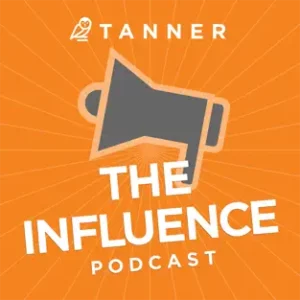As difficult as it is to believe, we are quickly approaching the end of another year! Once again, it has been a year of many challenges. We extend our sincere appreciation to all of the dedicated nonprofit organizations in our area that have continued to provide such meaningful service in spite of the challenges. We sincerely hope that you enjoy this edition of our newsletter. If you know of anyone else who might enjoy receiving this newsletter, please let us know.
Leadership in Action
Strengthening Your Board: Performance, People, Culture, and Impact

How does your board stack up? Is it a diverse, high-functioning, strategically minded fund-raising machine? Or is it more of a work in progress with opportunities for sharper performance?
It’s likely that your board is a little of both—high-performing in some areas and ripe for improvement in others. According to BoardSource’s most recent board study, more than 70 percent of chief executives and 80 percent of board chairs believe their board’s performance has improved in the past three years. Yet, there’s always room for improvement.
The Good, the Bad, and the Board
The report offers four key findings relative to what boards do well, how they are structured, how they operate as a group, and what matters most in terms of leadership.
Connections count. Boards need to be more connected to the people they serve. Almost half of chief executives said they didn’t have the right board members to “establish trust with the communities they serve.”
Board members should reflect an organization’s values and beliefs. Members who don’t know or aren’t a part of the nonprofit’s target community reflect a disconnection with that population, which is problematic.
Individuals’ reputations and networks within the community and their knowledge of the communities served rank numbers 4 and 5 in terms of priorities for board recruitment. Organizations that define a desired mix of diversity, skills, and connections have an easier time finding new board members.
Fundraising isn’t the only thing. Boards that focus primarily on fundraising do so to the detriment of other key areas, such as strategy, relevance, and impact.
This year’s BoardSource study finds that boards placing the highest level of importance on fundraising have lower ratings in several key areas of performance compared to those that rank fundraising lower in importance. For example, diversity and inclusion, operating context, and strategic direction suffer in performance when fundraising is ranked very high.
This is not to say that fundraising isn’t or shouldn’t be a board priority—it has ranked as “very important” in the BoardSource study for more than 20 years. Rather, these findings indicate that a pinpoint focus on fundraising seems to take away from big-picture goals and strategy, elements that set up nonprofits for long-term success.
Align expectations. There’s a disconnect between where boards focus their time and
their chief executive’s priorities.
More than 60 percent of chief executives reported that their boards didn’t spend enough time building community relationships, thinking strategically, understanding roles and responsibilities, leveraging connections to influence public policy, learning the organization’s programs, projecting a public image, and several other areas of performance. However, these executives ranked many of these same activities relatively low in terms of importance.
So, which is it? Are these areas worthy of more investment of time and effort? A lack of alignment indicates a possible lack of direction.
One interesting sidebar to this finding relates to board oversight of the chief executive. The board is responsible for providing the chief executive the support and direction necessary to lead the organization, including regular performance reviews. Unfortunately, only 53 percent of chief executives reported that they’d had a formal, written evaluation in the past 12 months, again pointing to a potential disconnect between board focus and chief executive priorities.
Chair leadership sets culture. The board chair plays an important role in cultivating the board’s culture, and when he or she sets clear expectations, a positive culture follows.
Positive culture also results when chairs are engaged in shared decision making; encourage board members to frame strategic questions; resolve problems, build consensus, and reach compromise; and foster an environment of trust.
The importance of board leadership comes into focus in times of executive leadership transition. A strong majority of board chairs report that their boards are well prepared to make informed decisions about how the organization should be led, but more than a quarter don’t have that level of confidence.
Boards must be prepared for chief executive transitions—only 45 percent of chief executives are “extremely satisfied” in their jobs. Boards that are ready to manage leadership change have strong knowledge of the organization’s programs, financial oversight, and a succession plan in place.
The COVID Factor
It’s important to note that BoardSource’s latest survey research was conducted prior to the pandemic. Once coronavirus reached pandemic proportions, many nonprofit organizations and their boards had to make significant and difficult choices to sustain their missions.
An interesting corollary to the BoardSource study findings is a July 2021 Accounting Today webinar on the topic of nonprofits and their futures. As expected, the most significant pandemic-related challenges for nonprofit organizations were cash flow, program delivery, operations, and keeping talent intact and motivated.
The most successful organizations had strong cash reserves and were able to pivot significantly to react to ever-changing requirements for government assistance, morph program delivery from in-person to virtual where possible, and repurpose funding in meaningful ways.
Generally, boards stepped up their engagement to not only help with funding and fundraising, but also with pro bono services and higher levels of effort. They oversaw a big shift in how organizations conducted fundraising by focusing on profitability.
Organizations also saw the benefit of changing certain procedures and upgrading technology to be able to operate more virtually. This had the benefit of reducing complexity and cost, as well as improving the work environment for staff.
Looking Ahead
So where does this leave us? The next BoardSource survey will likely provide some unexpected results as board members and chief executives reflect on performance pre- and post-pandemic. The pressures of the pandemic forced boards, executives, and their staffs to adapt to new norms, some positive and some negative.
The good news is that boards that learned how to cope and adapt are in better shape for the future. The positive momentum and change reported by chairs and chief executives is likely to continue.
Interested in discussing how to fine-tune your board? Let us share our board best practices with you.
Word to the Wise
How to Attract Millennials & Gen Zs to Your Cause

A lot has changed over the past 10 years, but certain values have not. According to the 2021 Deloitte Millennial Survey, millennials and Gen Zs have maintained their idealism, desire for a better world, and their belief that business “can and should do more to help society.”
These steadfast principles bode well for nonprofit organizations as millennials and Gen Zs enter and experience success in their careers and commit to causes they believe in.
Prime Time for Involvement
The Pew Research Center identifies millennials as those born between 1981 and 1996, while Gen Zs are those born in 1997 on. This makes their age range from about 23 to 40, representing the largest portion of the workforce in the U.S.
What can nonprofit organizations do to leverage these groups’ desire to help and attract them to their volunteer and donor ranks? Here are four characteristics to embrace when appealing to millennials and Gen Zs:
Be collaborative: The traditional chain of command that has typically defined organizational operations is failing millennials and Gen Zs. They prefer to be affiliated with organizations where they are encouraged to contribute to the decision-making process and to understand the context and reaching of major decisions.
Nonprofit organizations that promote a collaborative environment are more attractive to these generations than those that work in silos Consider implementing donor surveys, targeted task forces, broad roundtable discussions, and cross-functional brainstorming to attract this crowd to your cause.
Be flexible: One obvious challenge of the pandemic has been how to be more flexible with the workplace. The same goes for donor and volunteer recruitment.
The Deloitte survey found that more than 40 percent of millennial and Gen Z respondents consider flexibility and adaptability to be hallmarks of a successful business.
If your programming allows for flexible volunteer hours and locations or offsite meetings, lean into these features as much as possible.
Be diverse: Gen Z is arguably the most open-minded and tolerant of any generation. They expect to see diversity in their community, volunteer, and work lives. They are more adept at understanding and embracing all forms of diversity, including gender identification and multicultural backgrounds. But they also understand that diversity is a work in progress and that getting to meaningful equity will take effort.
Take care to reach out to a diverse population in terms of emerging leadership, volunteer coordination, and employee base. And don’t overlook your board—it’s the face of your organization.
Be digital: Millennials and Gen Zs grew up with digital devices and connectivity. They’re not only tech savvy, they expect technology to be part of solving social problems. These groups know that technology is essential to bringing people together.
Your organization must reach this population using popular digital pathways. For example, is your web presence mobile, fast, and attractive? Are you telling your story across all platforms? Do you use calendaring programs to let volunteers schedule their time and track their impact? Do you accept donations on your web outlets?
Engage on Their Terms
It’s interesting to see how millennials and Gen Zs are making an impact. Their concerns center around many of the pressing social issues of the day—and they want to help. Engage them on their terms and your organization is sure to benefit from their energy and enthusiasm.
Our team can help you brainstorm your volunteer and donor strategies. Contact us to set up time to talk.
Cybersecurity: Know Your Hacks

The pandemic has brought out the best in many people—and the worst in others. According to the Identity Theft Resource Center, data breaches were up 38 percent in the second quarter of 2021.
To maintain network security, remind your team to use utmost care when responding to emails and clicking links. Here are a few of the most popular hacks targeting your busy staffers:
Phishing: Phishing gets users to divulge key information, usually via emails and texts that look legitimate. Embedded links lead to fake websites where users are asked to enter passwords, financial information, or other protected data.
Spear phishing is more sophisticated. With spear phishing, a particular set of users is researched and targeted, so emails and other communications appear to be from a friend, colleague, or boss, meaning recipients are more likely to respond with the information requested.
Brute force: This type of attack applies computing power to try repeated logins using millions of combinations of letters, numbers, and symbols. This is especially effective with shorter, common passwords.
Social engineering: Think all those online quizzes and polls are just for fun? Hackers use social platforms to collect data using seemingly innocuous games. By compiling enough data, they can mimic user behavior and gain network access by changing login credentials.
Keylogging: This requires a bit of malware to capture your keystrokes. Usually a user downloads the malware unintentionally by clicking what appears to be a legitimate upgrade to a well-known application or by downloading an infected file.
Shoulder surfing: As the name implies, this hack involves stealing a person’s credentials by physically watching them. Crowded public areas provide the proximity needed for this hack.
Don’t be a victim of cyberthieves. Ongoing training and reminders can reinforce the need for caution to protect usernames, passwords, and account information.
We recommend that your organization consider having periodic Information Security Risk Assessments and Vulnerability Assessments performed that provide specified enhancements and monitoring of your information security. These assessments and testing can be done in an economical manner and greatly reduce the risk of loss of critical data, significant capital expenditures, and lost productivity. Contact us toset up time to talk.


